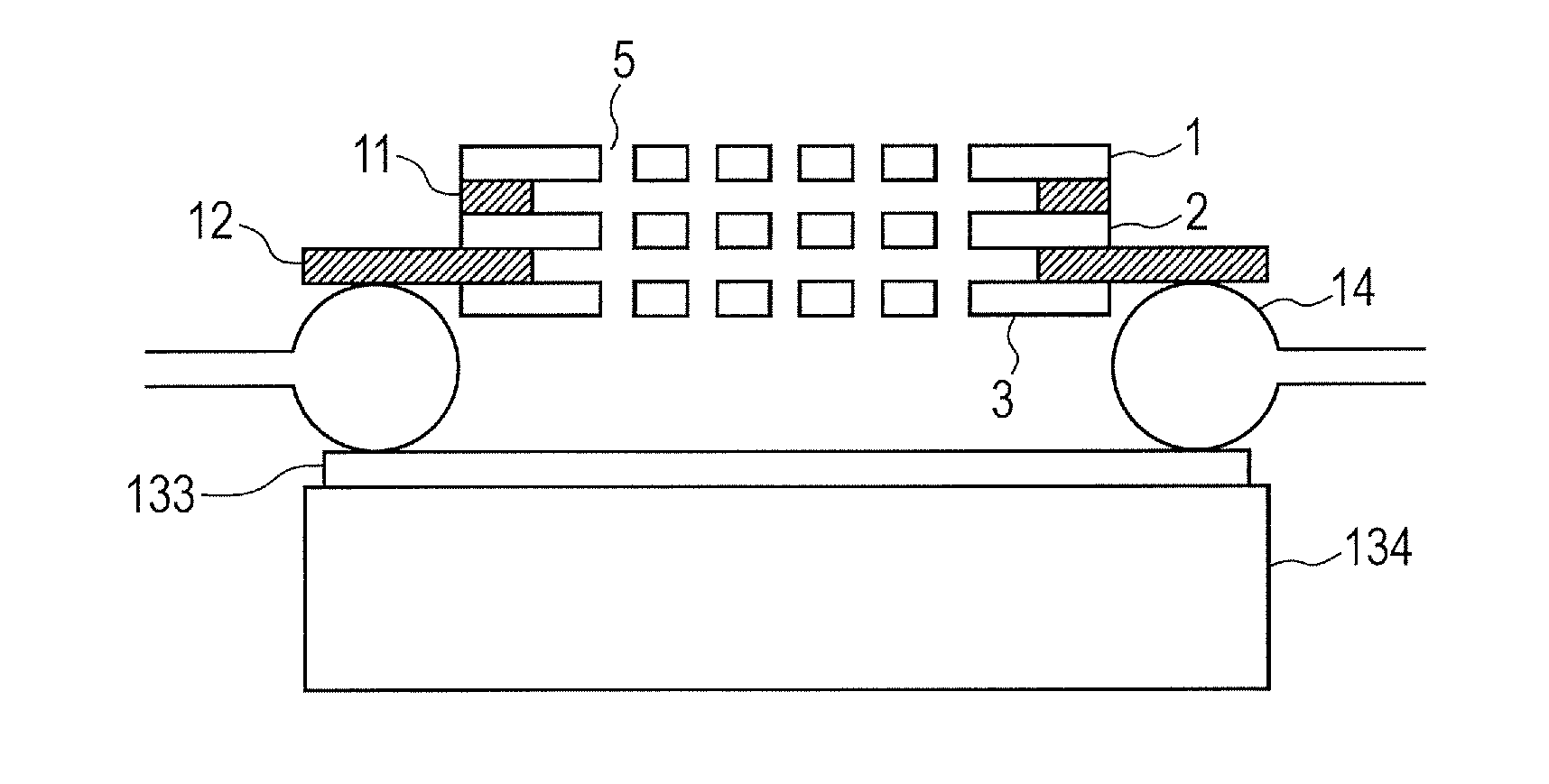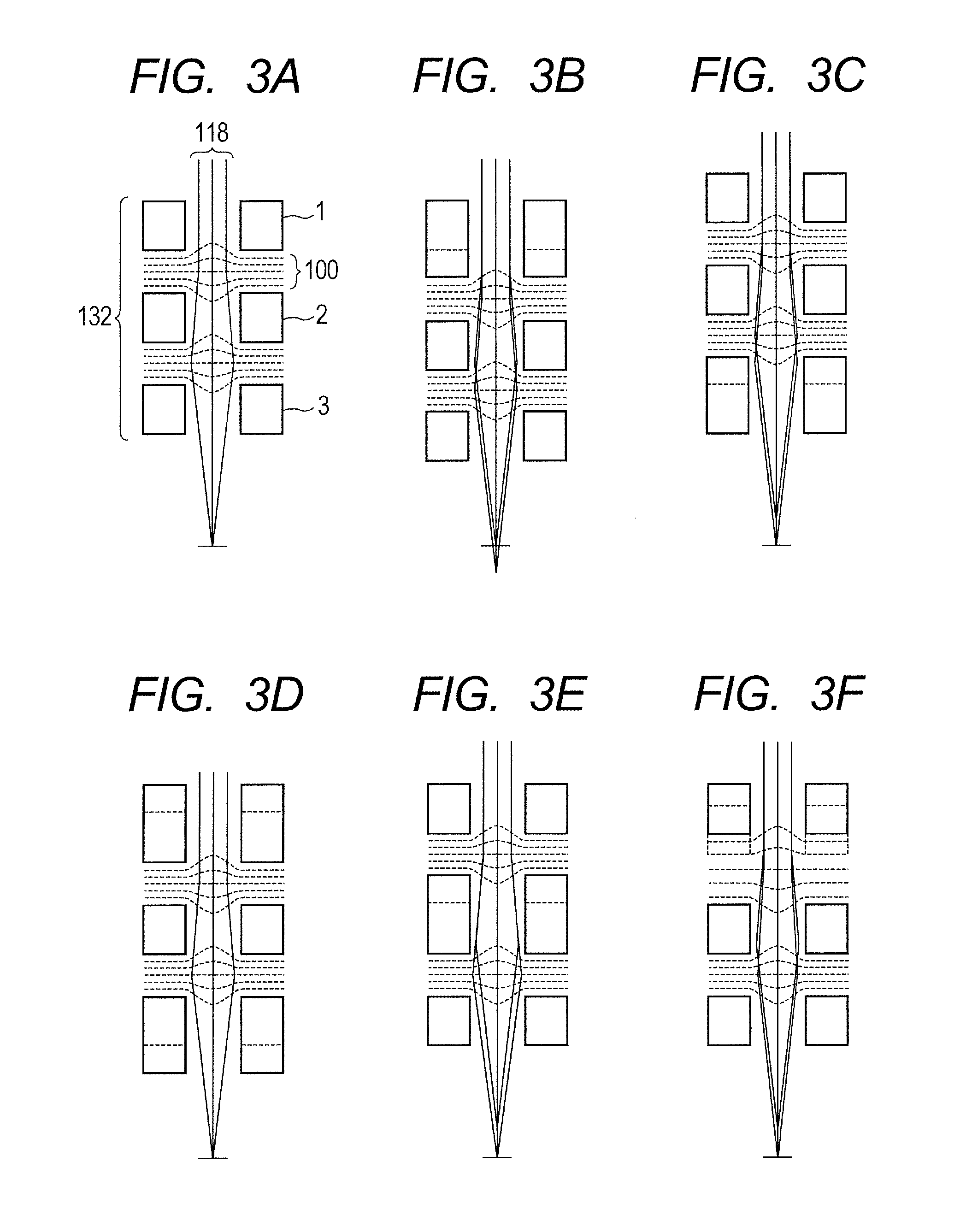Electrostatic lens array
a technology lens array, which is applied in the field of electrostatic lens array, can solve the problems of difficult adjustment of minimizing a total focus deviation, long focus adjustment time in the conventional apparatus, etc., and achieve the effect of easy adjustment of focus
- Summary
- Abstract
- Description
- Claims
- Application Information
AI Technical Summary
Benefits of technology
Problems solved by technology
Method used
Image
Examples
example 1
[0073]As Example 1, a structure example of an electrostatic lens array to which the present invention is applied is described with reference to FIG. 1.
[0074]FIG. 1 is a diagram illustrating details of the electrostatic lens array 132 illustrated in FIG. 10. An average thickness of each of the first electrode 1, the second electrode 2, and the third electrode 3 is 100 μm, and an average interval between the electrodes is 400 μm. Each electrode is made of metal or semiconductor.
[0075]An average diameter of the apertures 5 for passing the multiple electron beams is 30 μm, and an average distance between the surface of the wafer 133 and the lower surface of the electrostatic lens 132 is 100 μm.
[0076]Further, values of the thickness of the electrode, the interval between the electrodes, and the distance between the surface of the wafer 133 and the lower surface of the electrostatic lens 132 are not accurate but have errors of approximately ±1 μm, ±0.5 μm, and ±1 μm, respectively.
[0077]In...
PUM
 Login to View More
Login to View More Abstract
Description
Claims
Application Information
 Login to View More
Login to View More - R&D
- Intellectual Property
- Life Sciences
- Materials
- Tech Scout
- Unparalleled Data Quality
- Higher Quality Content
- 60% Fewer Hallucinations
Browse by: Latest US Patents, China's latest patents, Technical Efficacy Thesaurus, Application Domain, Technology Topic, Popular Technical Reports.
© 2025 PatSnap. All rights reserved.Legal|Privacy policy|Modern Slavery Act Transparency Statement|Sitemap|About US| Contact US: help@patsnap.com



